The scope and character of the pensions bourgeoises – renamed maisons de santé early in the Revolution – changed dramatically following the passage of the Law of Suspects in September 1793. This legislation called for the creation of the Revolutionary Tribunal and the arrest of anyone who, “par leur conduite, leurs relations, leurs propos, leurs écrits se montrent partisans du fédéralisme et ennemis de la liberté.” As one might expect, the prisons of Paris very quickly became overcrowded with enemies of the Republic, awaiting trial and probable execution. The rapidly growing number of maisons de santé provided at least a temporary solution to prison overcrowding. The former clinics thus became detention centers for sick, infirm, or mentally ill prisoners ( who were in effect) …mostly ex-nobles and members of the highest echelons of pre-Revolutionary society. Of course, the maisons de santé were much more comfortable (and expensive) than traditional prisons. ( Bradley S. Reichek )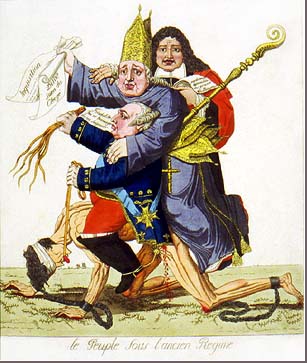
In 1793 France’s smart set, its “chic and swell” , checked into a “hospital” on the rue de Charonne, where , for about $50,000 or more per month, they could drink champagne, play cards, and discuss the current theatre. The Reign of Terror was filled with some unusual incongruities…
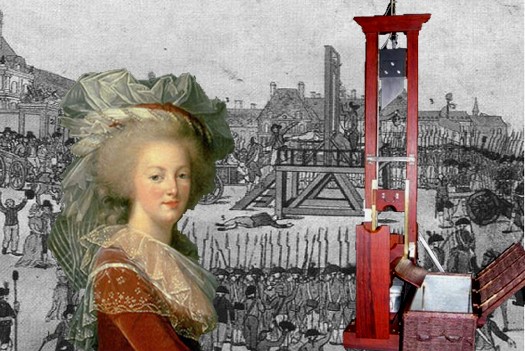
"How it changed the world: As the Revolution progressed, citizens began to vocalize their complaints about perceived inequality in execution methods of the day. This was a new France! It wasn't fair that nobles got beheaded with a dignified sword and everyone else got tossed on the agonizing breaking wheel. Dr. Joseph Ignace Guillotin was tasked with finding a way to humanely separate people from their heads. Inspired by a similar beheading device from 13th century called the Halifax Gibbet, Guillotin's crew emerged with a sleek, indiscriminate machine that would come to represent the entire revolution. It was the first real effort to make capital punishment quick and painless (not to mention efficient), and after the revolutionaries ran out of people to kill, they finally got around to shoring up their democracy. "
Essentially, an underground market for Certificates of Good Citizenship flourished as well as bribing Vigilance Committee members to be excluded from the list or paid to have their records mislaid. When one realizes that arrest meant certain death, one can understand why this phase of the Revolution was called the Reign of Terror. Once the public’s appetite for blood was whetted, often two or three tumbrils were required daily to cart the daily batch of condemned to the guillotine on the Place de la Concorde.
The contrast between Dr. Jacques Belhomme’s so-called jail and the other prisons of the city, most of them little better than dungeons, must have made the amenities of the doctor’s establishment seem even more delightful. Here, between courtyard and garden in a tanquil setting that belonged more to the country than to a city in the grip of terror, one could still enjoy some of the vanished pleasures that constituted the famous “douceur de vivre” of the eighteenth century. A vast, walled park with a garden and an orchard of fruit trees invited one to stroll of a morning. In the evening Dr. Belhomme’s “patients” would gather in the principal salon for cards, conversation and music. Visitors from the outer world were not only permitted but encouraged. Every evening a long line of carriages waited in front of the gates, and the sound of laughter and music drifted into the street until the early morning hours.
“For a sizable fee, prisoners could get themselves declared sick or mentally troubled and transferred to a maison de santé, where the “infirm” could recover while still under (nominal) police surveillance. In theory, once the prisoner had been declared “cured” he or she would have then been transferred back into the normal prison system to await sentencing. But, in practice, as long as the prisoner was willing and able to pay for his or her room and board at the maison de santé, a certification of recovered health would not be forthcoming. Health was directly related to wealth and as long as money flowed to grease the wheels of State corruption patients could largely avoid execution.”
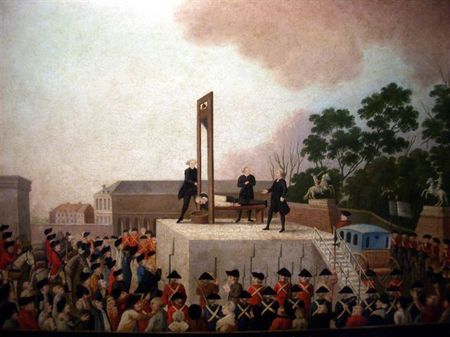
On January 21st, 1793 Louis XVI was executed by a Guillotine in front of the people of France who saluted his death as the beginning of what they believed to be a better era.
The food was perhaps not all that an epicure might desire, but arrangement permitted Belhomme’s more affluent pensioners to dine at a table separate from fellow guests. Here, for a supplementary sum, one could order from a different menu; a la carte as it were. Although officially a prison, guards and bars were not needed at 70 rue de Charonne. Confinement to Dr. Belhomme’s asylum assured one of something far more important than comfortable living in uncomfortable times. Somehow the accusations made against Belhomme’s prisoners became mysteriously misplaced by intermediaries in the busy offices of the public prosecutor, Fouquier-Tinville. No inmate in Dr. Belhomme’s custody was ever brought up for trial. Thus it was not pleasant quarters or dainty food or music and laughter that one bought from Dr. Belhomme. It was life itself.
As the guillotine began to go about its work in earnest, as the number of the condemned rose from ten to twenty and even thirty a day, as the arrests increased and the terror progressed, Belhomme’s business flourished proportionately. Clients poured in from all the prisons of Paris and from all walks of life. The actual insane; there remained a few of these whom he could hardly put out onto the street; were packed off to rooms in the attic to make way for more lucrative pensioners.
A house next door, the Hotel Chabannais, was taken on long lease and hastily refurbished. The Duchesse d’Orleans, widow of the guillotined Philippe Egalité and at one time the richest heiress in France, arrived. There was a Talleyrand, a Nicholai, and the Comte de Saint-Aulaire, from
se memoirs have come many of the details about the everyday life in this curious prison.“This is precisely what seems to have happened in the Marquis de Sade’s case. His own assets, combined with what was most certainly an active campaign on the part of Quesnet and other representatives ensured that he was declared ill, transferred to Coignard’s maison de santé,( a competing establishment ) and protected from the Terror’s grasp. In a letter to his agent, Gaufridy, following his release from the Maison Coignard in October 1794, Sade explicitly cites several thousand livres of expenses incurred during his seven-month stay at Picpus.Sade desribed the Maison Coignard as “un paradis terrestre; belle maison, superbe jardin, société choisie, d’aimables femmes.”Having become a veritable connoisseur of French prisons since his first imprisonment in 1777 this was high praise indeed!”
The clientele was by no means limited to the former nobility. The widow of the revolutionary Pétion found shelter on the rue de Charonne, as did the deputy Rouzet. The theatre was represented by Mlle Mézeray and also by the most beautiful actress of the day, Mlle Lange. Literature arrived in the person of the Comte de Volney, author of “The Ruin and Falls of Empires” .
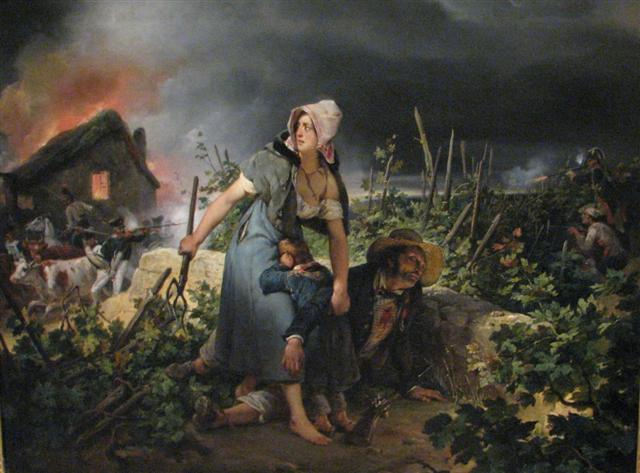
"From here we see a new freedom arise in painting, as well as in the thinking, as Protestantism gives way to Secular commissions and the artist begins to portray historical scenes. Let's follow the progression on thinking through these next three paintings. First, this painting from 1789 by English painter Joseph Wright, depicts a scene from the French Revolution. "
It was an oddly assorted group that found itself tossed together under Belhomme’s roof. This seems to have lent the place an additional interest, for a number of unexpected friendships were made there. The Duchesse d’Orleans and the deputy Rouzet formed an attachment that was to last the rest of their lives. After the terror ended and Belhomme’s prisoners were dispersed, Rouzet joined his friend in exile, remaining with her even when, under the Bourbon Restoration, the Duchesse regained her rank of Princess of the Blood. When he died, she insisted that he be interred in the royal crypt at Dreux so that even in death they would not be parted from each other.
Only one cloud cast a shadow over this happy little haven that seemed so far from the storms lashing the outer world; but it must have brought a singularly disagreeable chill into the sociabilities of the salon. This was the small matter of one’s monthly bill. For the fees were by no means over when one had paid the intial five thousand livres. There was one,s board and keep as well. As with any well regulated hotel, the price varied according to the accomodation. Small back rooms, rooms sparsely furnished and shared with several others , could be had for as little as four hundred livres per month. There was a long waiting list for these. For average or superior accomodations, the rate was substantially higher. Nor was the end in sight when one had paid the rent. There were other charges too: forced contributions to neighborhood patriotic funds, tips to the concierge, exactions for wine and various services. All in all, one could count on paying something in the neighborhood of fifty thousand dollars a month, or more.
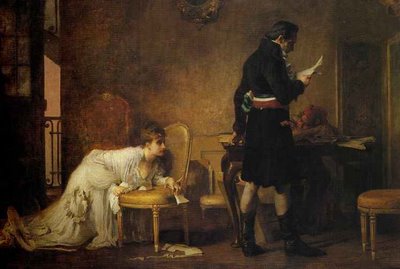
marcus Stone. An Appeal for Mercy, 1793. 1876 oil on canvas A picture of the French Revolution showing an aristocratic woman pleading before an official. 1876
aIn the midst of a revolution in which all usual sources of income had been cut off, such a sum as this was not readily available. The rich who had lived off rents and revenue from their lands were now destitute. The nobility whose positions automatically meant the confiscation of their pensions and property were now penniless. Survivors of proscribed or executed spouses such as the Duchesse d’Orleans were withour means due to state confiscation. Only those who had friends in the outer world, or those who had wisely hidden a pile of gold or managed to conceal small negotiable objects of value were able to meet Dr. Belhomme’s monthly exactions. The fate of those who came to the end of their resources or whose family and friends refused to make further payment was well known. They were sent back to a public prison, brought up for trial, and finally guillotined.Business was business.
According to every report, Dr. Bellemare was an amiable man. Those who survived, recall him as good humored, and one who managed the unpleasant business of expelling an indigent pensioner with such affability, grace and style , that nearly everyone parted on the best of terms. The fate of the Duchess de Chatelet was a salutary example to other boarders who might think Belhomme’s prices were beyond their means. The Duchesse, after claiming that she was unable to scrape up further money, was summoned to the office and told it was no time to pinch pennies. Belhomme gave her a few days in which to reconsider her assets, but to no avail. She was sent back to prison and within a short time brought before the Revolutionary tribunal and guillotined. Belhomme was as distressed by the news as the Duchesse’s friends were. “The lady fell victim to her misplaced thrift,” he declared.
One is left to imagine the sensations of those who were themselves running out of money. Evening gatherings over the bezique and the clavecin may not have been quite so carefree as they appeared. Nor can the disconcerting presence of the insane, who were continually drifting down from the attic, having contributed much to the general gaiety. A demented old priest of rather wild appearance seemed to get on people’s nerves particularly.
At the very least, in January 1794, Coignard scored a symbolic victory over his competitors when Belhomme himself checked in for “illness” while serving a six-year sentence for having blatantly extorted huge sums from his guests and abused the authority vested in him by the Convention.
He did not long enjoy the mysterious immunity he had been able to give others. He was brought up for trial and sentenced to six years in irons. The lightness of the sentence only contributed to the conjecture that he enjoyed protection in high places. Before running away to Coignard’s business, Belhomme turned over his operation to his wife. Incredibly, she continued to manage it on the same terms and conditions until the overthrow of Robespierre’s Committee of Public Safety on 9 Thermidor. Belhomme was released in 1798 and resumed control of his institution; dying there in 1824 at the age of eighty-seven.
The question has to be asked. The “what if” begs a response. Could you imagine Naomi Campbell and Berlusconi as “patients” of Dr. Belhomme? .It is to be assumed that French nobility and the aristocracy of 1793 were not the best behaved, if we compare them to the English version found in the caricatures of Thomas Rowlandson and James Gillray. One can only surmise how Belhomme would has responded to Silvio Berlusconi’s demands for exotic lap and pole dancers. It is plausible that Berlusconi is the reincarnation of Alfred Jarry and his “pataphysics of protocol” . An insane asylum for the following cast is not that far-fetched:
Silvio Berlusconi received a pole and lap dance during an official visit to Brazil, it was claimed yesterday. The Italian premier, 73, who has been involved in a series of sleaze scandals in the past year, was said to have been entertained by six dancers in a hotel room. But aides in his office said reports of an exotic dance show were ‘wide of the mark’, describing the event as a ‘brief display of traditional local dancing’.
Belhomme’s rules did encourage plenty of house visitors however:
Miss Valenca added: ‘We were told that they were looking for Brazilian dancers for a show in Italy that would be broadcast in two weeks’ time. ‘Berlusconi was very charming. He said that he wanted to take Brazilian dancers to Italy.
‘We did a 12-minute lap and pole dancing show. I didn’t stay but the party went on all night.’ …

Back to business: Campbell (third from right) with (left to right) Elisabetta Gregoraci, Leonardo DiCaprio, Philip Green, her boyfriend Vladimir Doronin and an unidentified female guest at the Billionaires club in Sardinia on Sunday night Read more: http://www.dailymail.co.uk/news/worldnews/article-1301725/Naomi-Campbell-arranged-gift-diamonds-Late-night-delivery-surprise.html#ixzz0yL4lf9sd
If house rules prevent importing such exoticism, the charming Italian P.M may have been able to prevail on Naomi Campbell:
The woman Naomi Campbell once regarded as her ‘surrogate mother’ yesterday cast grave doubts on the supermodel’s account of how she received ‘blood diamonds’ from an African despot. Her former agent Carole White told a war crimes trial that Miss Campbell was promised the gems as a gift from ex-Liberian president Charles Taylor and accepted them by arrangement from two of his henchmen.
The damning testimony was in stark contrast to the model’s earlier evidence to the international court in The Hague that the diamonds were delivered – out of the blue – to her hotel room in the middle of the night, and she had no idea who had sent them. While Miss Campbell said she barely remembered meeting Taylor at a dinner in Pretoria in 1997 hosted by Nelson Mandela, Miss White insisted the model and the dictator had been ‘flirting’ through the evening.
Another witness, American actress Mia Farrow, said she had heard the model boast that she had received ‘a huge diamond’ from Taylor when they were guests at a celebrity-studded dinner hosted by South African president Nelson Mandela in September 1997.
Miss Campbell told the court last week that she had received three small, uncut diamonds but had not known who had sent the ‘dirty looking pebbles’. But Miss White told the court there were five or six gemstones, and that Miss Campbell had not only known who sent them, but made the arrangements for their delivery personally.
Finally,what possible Reign of Terror could be complete without the gracious presence of Dr. Laura Schlessinger. The nightly variety show held around the clavecin could have been further animated by this long time and perhaps chronic care “patient”, if they let her come down from the attic. Schelessinger’s Her views are actually quite complementary to values held dear by the old guard. Only. if a web-cam could be installed to watch Belhomme in his unpleasant business of expelling this trio. Seeing him give a few days grace and then, if the required liquidity was not forthcoming, well, the axe, quite literally, would fall. And perhaps to more than a smattering of applause.


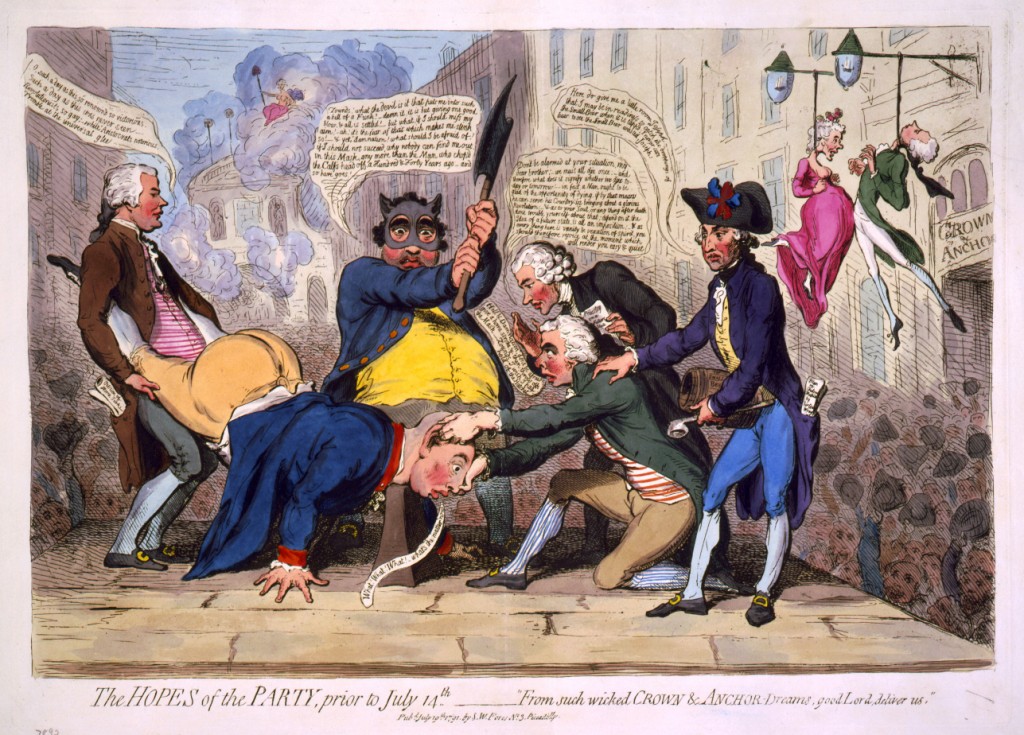
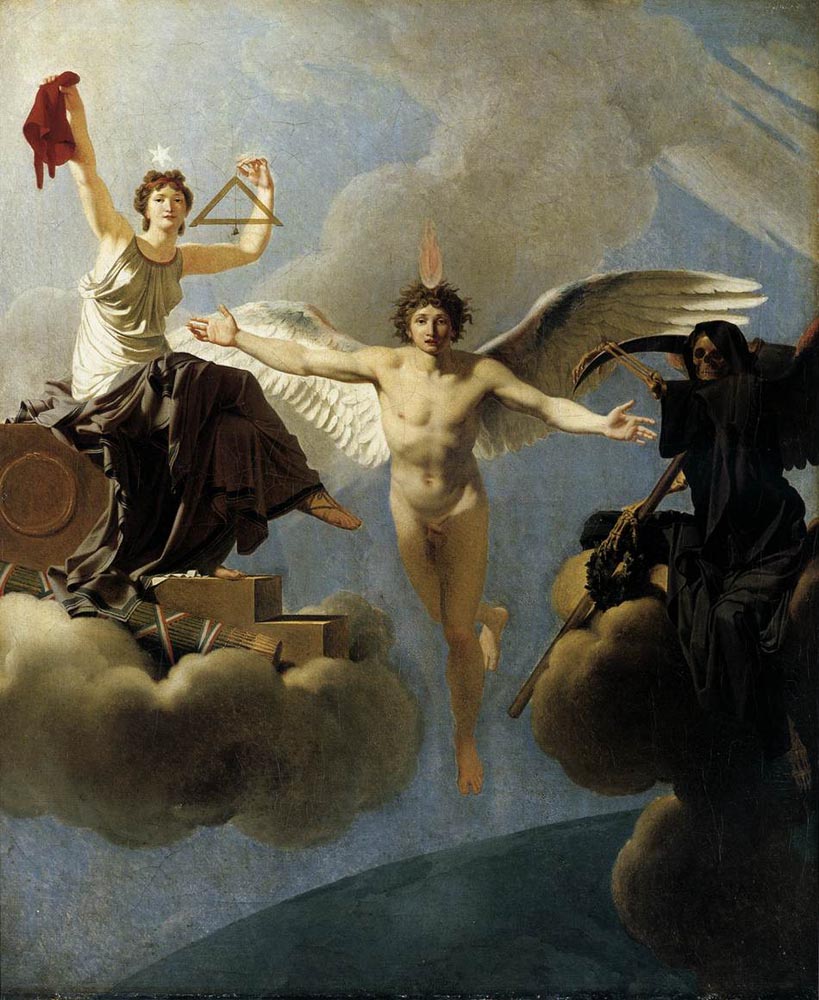
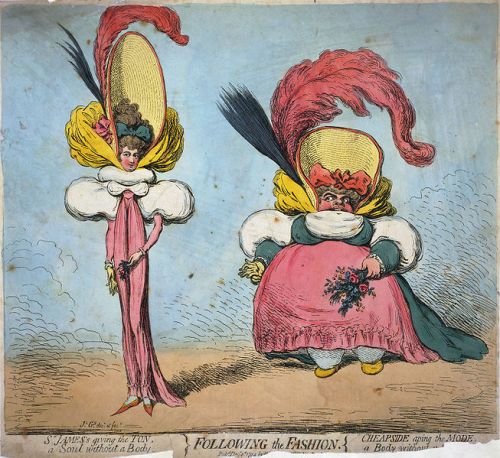
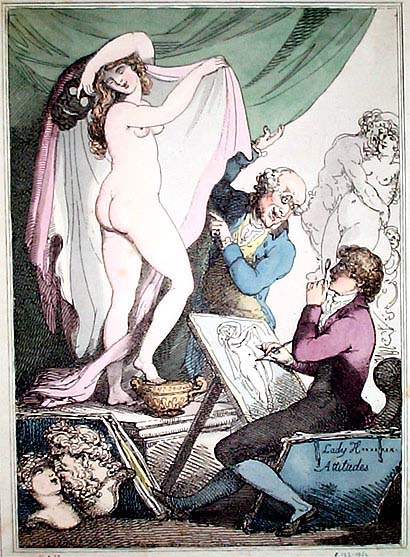



 COMMENTS
COMMENTS